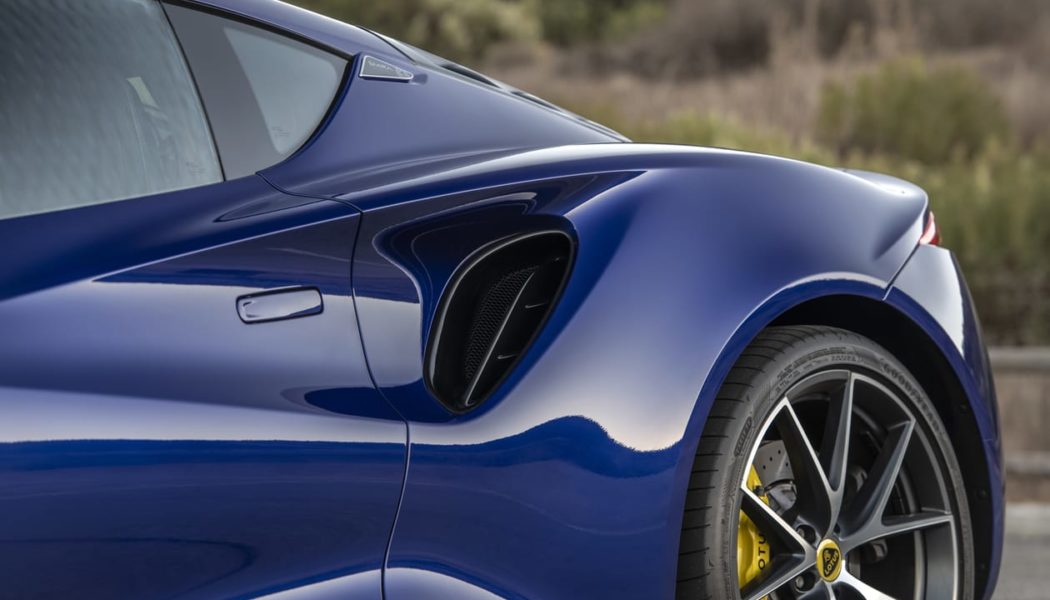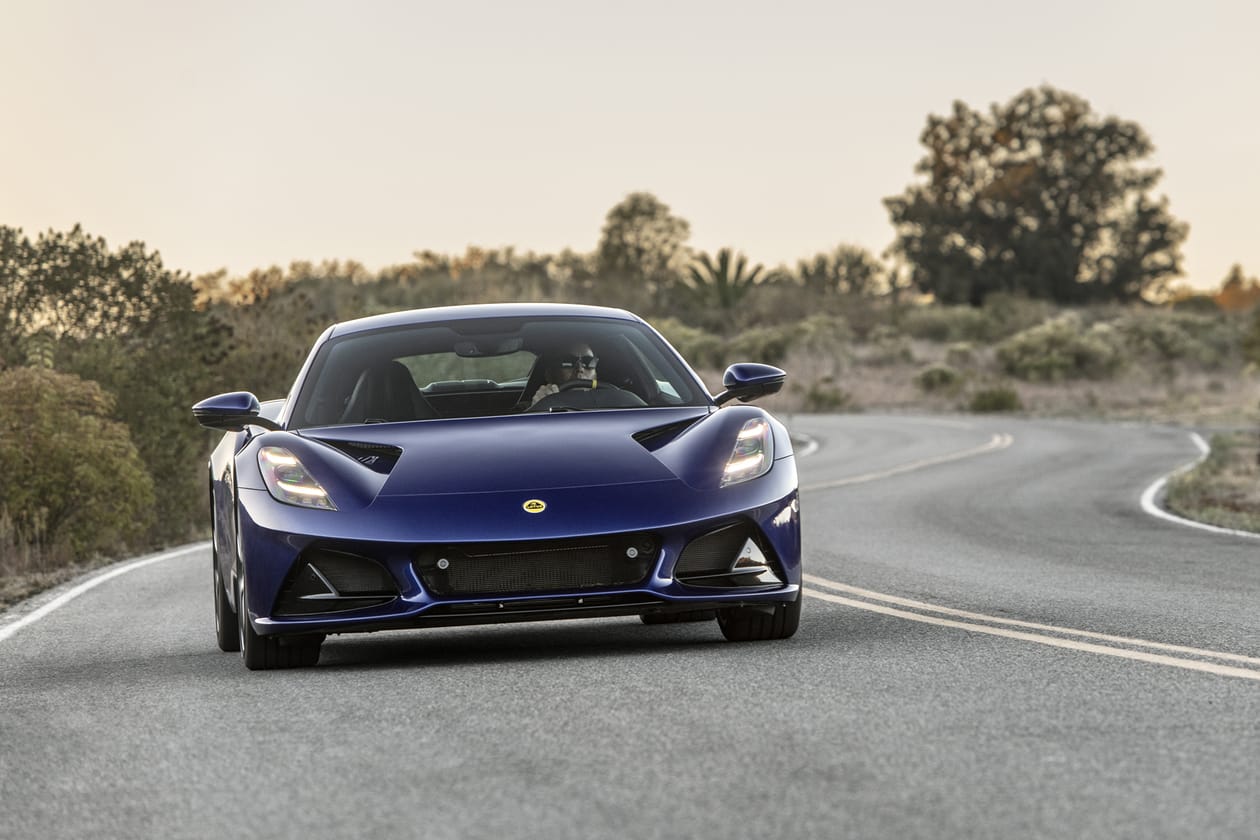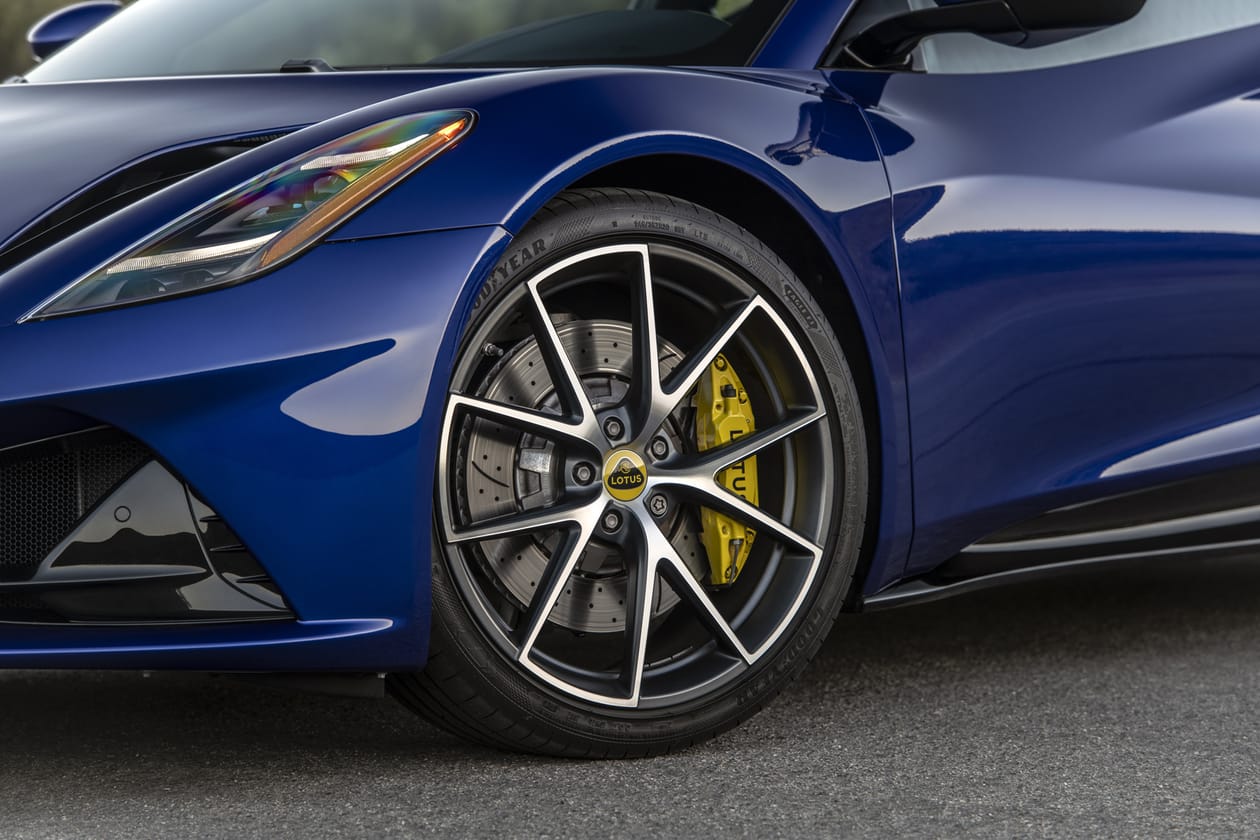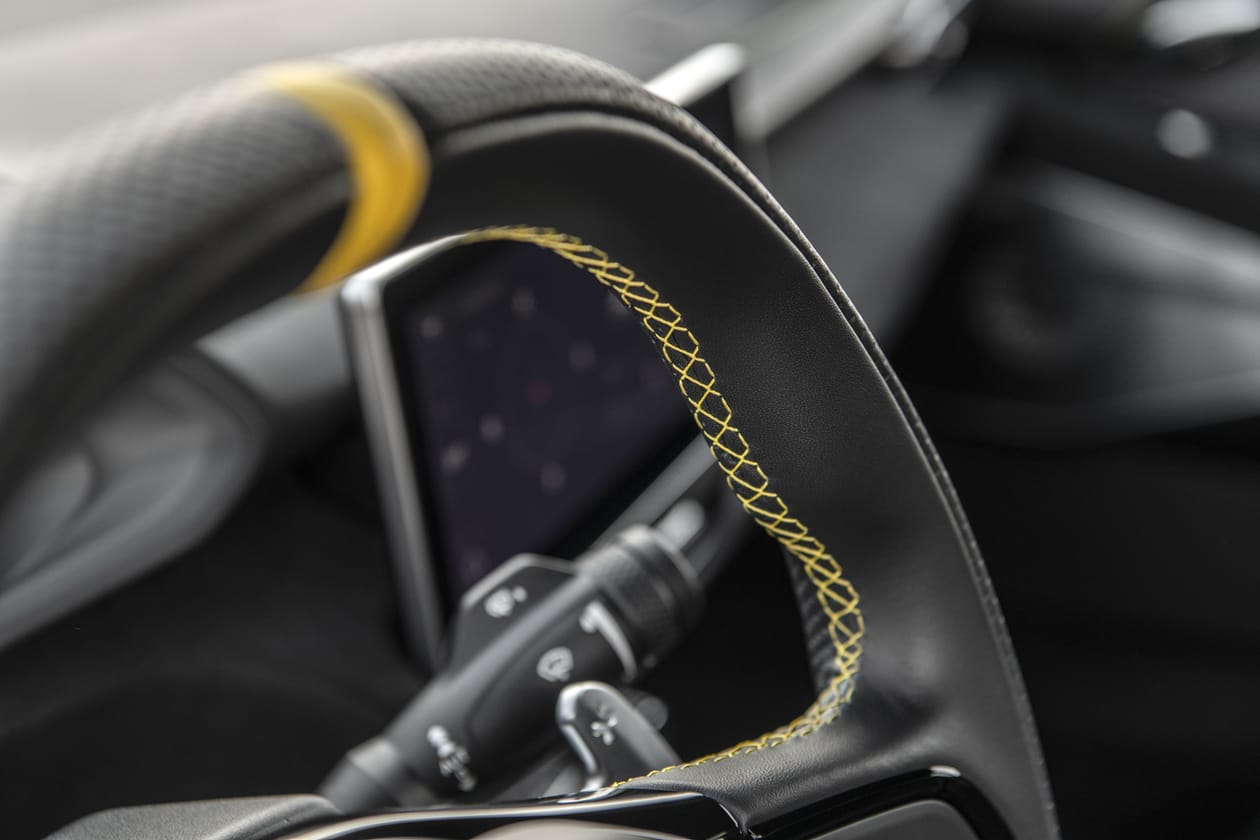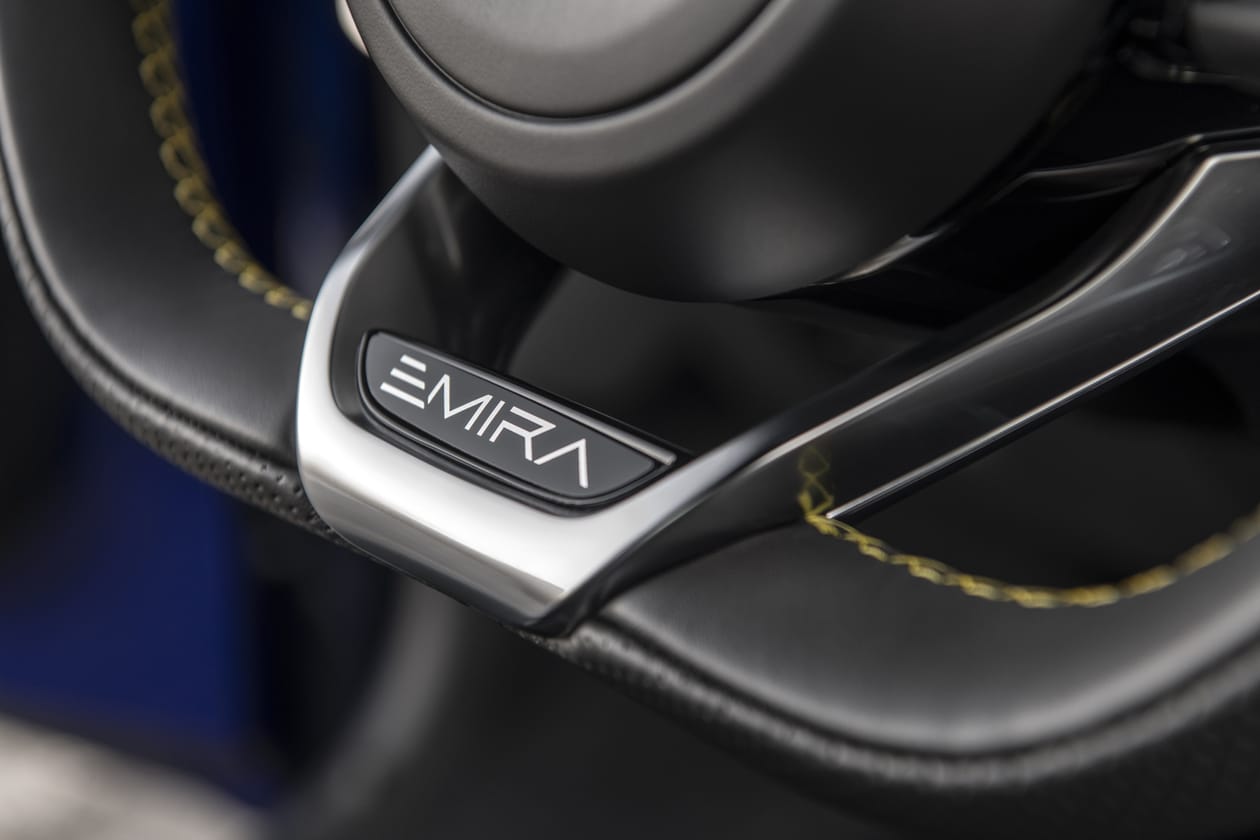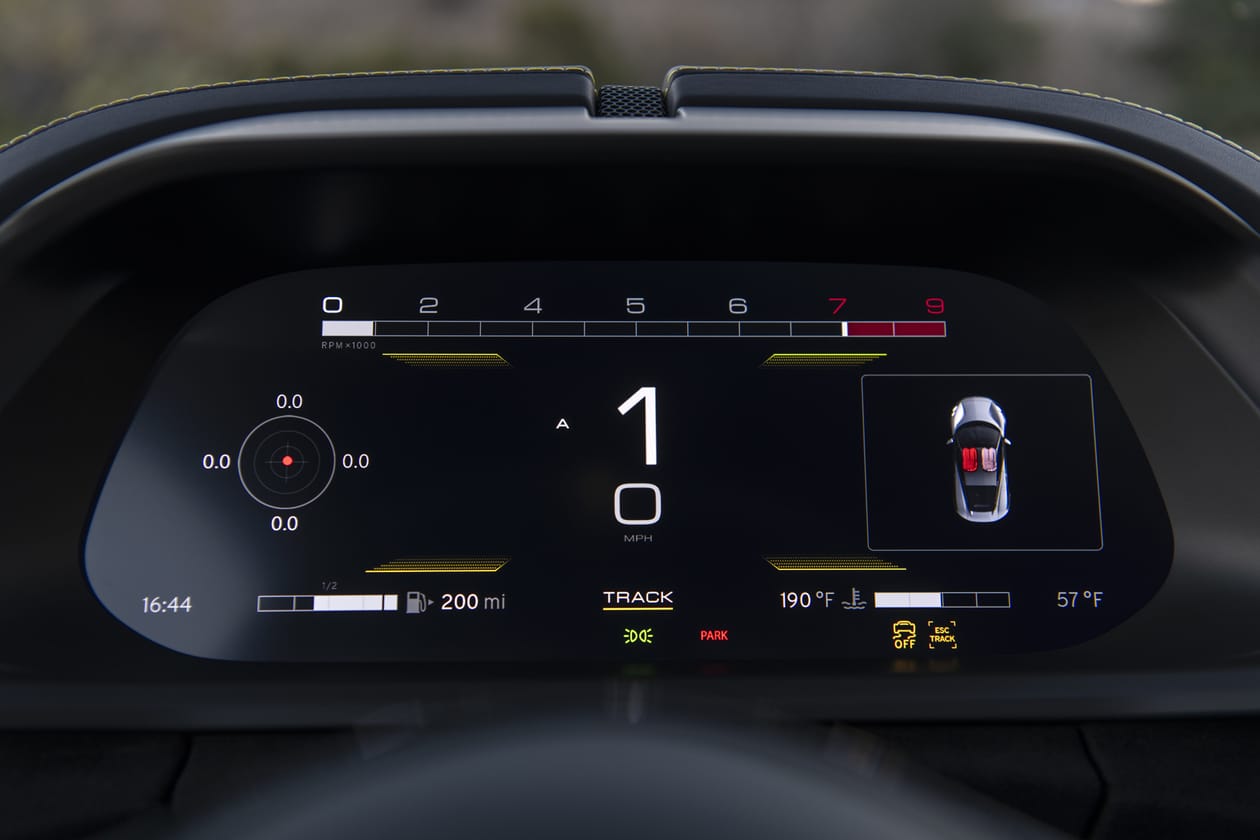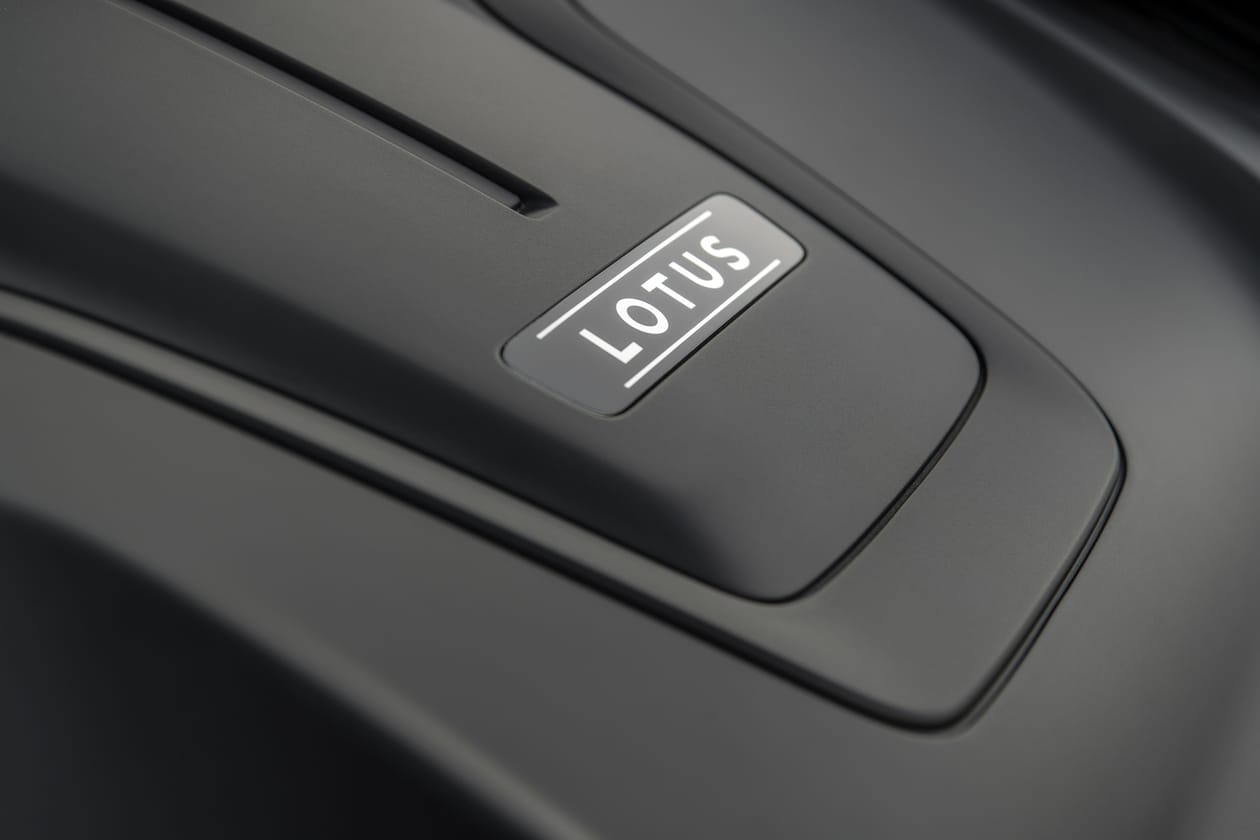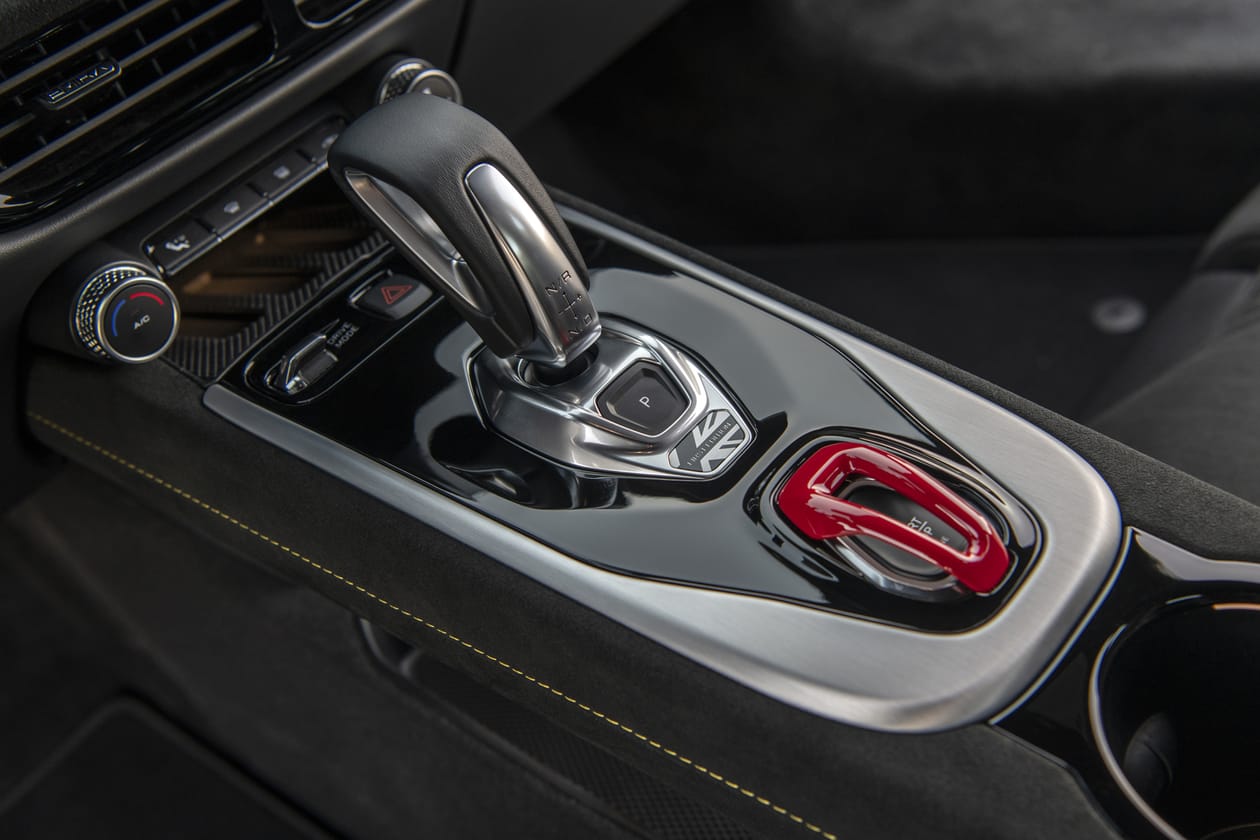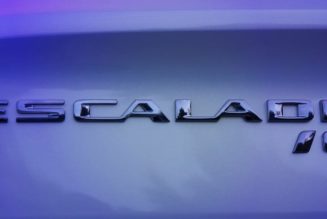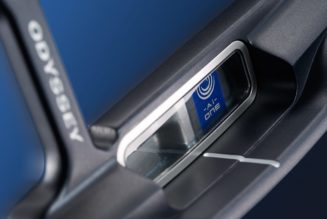There’s often a “shame” that comes with purchasing the entry level model and trim of specific cars, as unfortunate as that may be. And while there’s a multitude of decisions as to why someone would, the fact of the matter is that they are entry level for a reason. For Lotus and its most recent sports car, the Emira, there is no exception to the rule and its downgrade is apparent.
When we tested the Lotus Emira First Edition earlier this year, we were highly impressed with the small form factor, its sexy design, the nimble chassis and, most notably, the power and transmission. What started (at least in the United States) as a stout 3.5L supercharged V6 supercharged mated to a downright-glorious six-speed manual gearbox is now contended against a turbocharged 2.0L, AMG-developed inline four and an eight-speed dual clutch. On paper the two models seem relatively comparable, but in practice the differences were very clear cut.
We were fortunate enough to Test Drive the Lotus Emira 2.0L First Edition for a week here in Southern California and, despite a few excellent points, left us with a sense of lacking and disappointment compared to its bigger, more engaging V6 brethren. Read on for our five key takeaways.
Everything Sounds Amazing
The biggest lasting impression we got from this Lotus Emira was the sound… of everything. It’s also the first thing you’ll notice as the driver – the plethora of delightful noises emitted not only from the engine, but also the chassis as well.
The aural pleasures that greet you is thanks to the location of the engine – being mid-engined, the driver’s left ear is situated directly in front of the motor, the turbos, the intake, etc. For the V6, the supercharger whine was so pronounced, but didn’t churn until you’re within a specific rev range and throttle position. For the turbo 4-cylinder however, you’re constantly hearing the turbos either spool up or blow off, when you’re not hearing the intake suck in mass amounts of air. The sensation of hearing the 2.0L AMG engine breathe in and out is mesmerizing, and should be beyond welcomed for anyone not only into tuning culture, but mechanics in general. It’s the number one aspect of the AMG 2.0L Emira we loved the most.
Besides the engine, the Emira also surprised us with other idiosyncrasies when it came to the noises it emitted. The electric steering pump was audible at red lights, both hushing quiet when the steering wheel was idle as well as turning back on when not. We could hear belts whirring and AC compressors initiating, and even the amount of road and tire noises was perceptible but not overbearing. It made us realize just how “tuned” the sounds of the Emira were, all of which are meant to engage the driver as much as possible while in the car.
It Handles Like a Lotus Should
We realize that gone are the days of ultra-lightweight Lotuses like the sub-2000 lb. Elise, but the Emira is no heavyweight at all at just under 3,200 lbs. Consider this a key factor in the handling, because that figure means the Emira is nimble and energetic in the corners.
Perhaps its a placebo of knowing this motor is short two cylinders and less-1.5L from the V6 edition, but the AMG-powered Emira felt much lighter and nippier than its supercharged edition we tested earlier in the year – despite the weight delta being just 30-or-so pounds. Nevertheless, no corner or off-ramp was safe from us gripping and ripping, equating to an excellent flat-riding, confidence-inspiring agility we rarely feel in sports cars these days. The steering was also tight and sharp, without feeling numb – thank you, thank you, thank you, hydraulic steering. The suspension was spot on, especially with our Touring springs’s appropriate ratio of bounce and stiffness. And the mid-engined layout meant a balance that’s both cliché and reality at the same time, allowing for us to really predict the levels of grip in the seat of our pants.
And speaking of seats – handling is nothing if you’re sloshing about, but the Emira’s semi-plush-semi-tough leather/Alcantara seats meant great lateral support while we were whipping it left and right. That being said, the lumbar support felt off, like we couldn’t fully reset the backrest regardless of how much we wanted to deflate it. Add that to a tight cabin and we couldn’t help but fidget while on longer trips through the canyons, so the seats weren’t exactly 100% unfortunately.
The AMG Motor Is Potent, But Ultimately a Let Down
So let’s address the elephant in the room – the smaller motor is, in summary, lacking.
The V6 and its subsequent supercharger was enticing, not only for the linear and near-endless pull of torque but also the brute feeling of those six cylinders firing. The AMG-powered 2.0L turbo however felt constrained, even though on paper the power and torque is comparable between them – 400 hp and 354 lb-ft against the V6’s 400 and 317, respectively. The turbocharger definitely walloped when the revs reached 3000+ rpm, but ultimately tapered off as the motor climbed, leaving us with a repetitive process of building up boost all over again. Compare that to the V6’s urgency and insistently-linear power band and the 2.0L fell flat against its “larger” brother.
Pick your poison at the end of the day; if you’re into turbos, turbo lag and huge gulps of frenetic acceleration, go for the AMG 2.0L engine. If “warp factor 12” and a feeling of smooth, continuous power is more your thing, the supercharged V6 will satisfy your inner “faster faster faster” itch. For us, we’d pick the latter, all day every day.
The Transmission Leaves Much to Be Desired
Perhaps there’s two elephants to address – the Lotus Emira with the 2.0L AMG-powered engine is also exclusively mated to an eight-speed dual clutch transmission.
Let’s put aside all the snobbery of a six-speed manual transmission – we actually like dual-clutch transmissions. They come off as a good mix of both engagement and reactiveness, as we realize our Formula 1 dreams through our paddle shifters. But the Lotus Emira’s DCT was often confused, resistant and even lazy at times.
First off, the paddles are way too shallow in their travel – we even second guessed ourselves a number of times if we had actually pressed it or not. In anything other than Track mode, the shifts were slow and long, leaving us with a delay before the turbo boost came on. On multiple occasions, we tried “double click”ing to drop from 5th to 3rd but found ourselves stuck in 4th, which then took three times as long to get the gear as our brain processed the situation.
And the gear lever mounted to the center console was even worse. Not only was the engagement speed the same, but for some reason Lotus designed downshift and upshift to a left and right motion of the lever, instead of the tried-and-true up and down respectively. This is due to the gear selector centralizing in Neutral, with a double-push up to get into Reverse, and a double push down to Drive, leaving left and right to the gears. Not only was this incredibly confusing and slow to operate, but it came off as changing an industry standard just for the sake of being different. Sure we didn’t ever shift using the lever and used the paddles all of the time, but some people do admittedly use this feature in dual clutch cars, or at least until they realize how intuitive it is in the Emira.
You’re Missing out by Not Getting the V6
The Lotus Emira AMG-powered 2.0L edition is a compromise. We argued with ourselves with this statement, realizing that if we had just drove this first before the V6, our concerns and feelings would be quelled. But this simply isn’t the case, as the two cars are night and day.
For starters, there’s certain objective elements missing from this edition that’s found on the V6, like the visible engine lump in the rear view. The 2.0L AMG power plant is disappointing shrouded by an oversized plastic cover, making one of the key aspects of a mid-engined car – being able to see the engine in your rearview – a moot point. The V6 engine also had an actuator flex and pull as you throttled up and down, which was one of our favorite visual key takeaways from our first Emira test drive; naturally, this is deleted from the AMG edition. The V6 is also exclusively manual and while some consumers may choose the automatic for physical reasons, you’d be missing out from the excellent visible gear linkage in the lower center console, which was our number 1 favorite feature from its V6 sibling.
So “A Tale of Two Engines” for the Lotus Emira – two opposing personalities that are tailored for two specific people. If you’re both willing and able, an upper echelon of delights greet you with the supercharged Toyota-developed V6 engine and its excellent six-speed manual transmission. If ease of driving, highway-cruising and “I Love Turbo Wooshy Noises” is more your flavor in life, the AMG-powered 2.0L is more so a preference and not a compromise. Either or, the Lotus Emira continues to be one of our favorite cars on the market today, one that’s built for a discerning driver who loves turning heads and carving corners.
